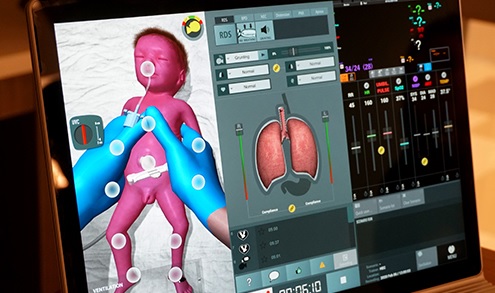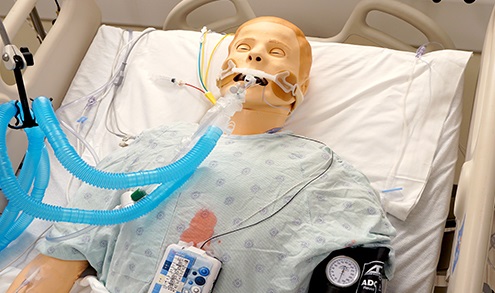
In Augmented Reality and Virtual Reality News
October 16, 2023 – Virti, a provider of experiential immersive training solutions, has recently announced that it has partnered with the University of Texas Medical Branch (UTMB) to introduce immersive learning experiences into its curriculum.
Since the 1970s, UTMB has been using simulations to train healthcare professionals, according to Viri. For example, it was one of the first universities to begin using ‘standardized patients’ – actors paid to role-play for students and bring realism to medical training. Now, the UTMB Health Education Center plans to use augmented and virtual reality (AR/VR) experiences, powered by Virti, to enhance students’ learning.
One notable XR application is the ‘patient safety room’ simulation, where students engage in exercises aimed at identifying potential safety hazards and HIPAA violations within a hospital setting. Following the exercise, students engage in debriefing sessions with their professors to discuss their observations.
Virti asserted that this immersive approach offers a significant improvement over traditional video-based and lecture-based teaching methods – “When they get out to clinical, they’ve already had practice,” explained Bruce Adcock, an assistant professor of Respiratory Care at UTMB. Furthermore, Virti noted that XR simulations can also be prepared in a shorter time frame, offering students more opportunities for practice.

Another XR simulation at UTMB involves medical interviews with a virtual patient powered by generative AI. As a result, the patient, known as ‘Mike White,’ can adapt to various languages, ethnicities, genders, and backgrounds as required by the curriculum.
Commenting on the virtual patient solution, Richard Briley, an instructional technologist at UTMB, stated: ”It’s geared towards students learning how to communicate with the patient and ask appropriate questions. There’s a medical interview component of it with about five or six objectives that they have to meet. The faculty makes sure that the students ask the necessary questions regarding the patient’s condition.”

As a result, students are able to learn how to communicate effectively with patients, ask relevant questions, and conduct physical examinations, including checking vital signs. Virti also added that since the Mike White virtual being is powered by generative AI, it can be programmed with a backstory that enables it to answer off-script questions. For example, if a student asks the virtual patient a question aimed at building rapport – ‘Who is your favorite baseball team?’ – the avatar will answer the question based on its backstory, thus promoting interpersonal skills and rapport building, according to Virti.
Currently in a pilot phase, XR simulations at UTMB have already been used to train about 1,000 students and have benefited students across multiple healthcare schools, including Medicine, Health Professions, Public and Population Health, and the Graduate School of Biomedical Sciences.
Virti stated that UTMB is actively collecting benchmarking data to assess the impact of XR on student outcomes. In the future, the University envisions XR technology potentially being used to evaluate overall student performance, and prepare for board exams, according to Virti.
For more information on Virti and its immersive training solutions, click hear. To learn more about UTMB and its Health Education Center that provides human, non-human (i.e., mannequins) and virtual reality simulations to train students, please visit the University’s website.
Image credit: University of Texas Medical Branch
About the author
Sinead Chloe
Sinead is a freelance copywriter and marketing professional. She has many years of experience in covering industries including tech, utilities, and the environmental sector.
